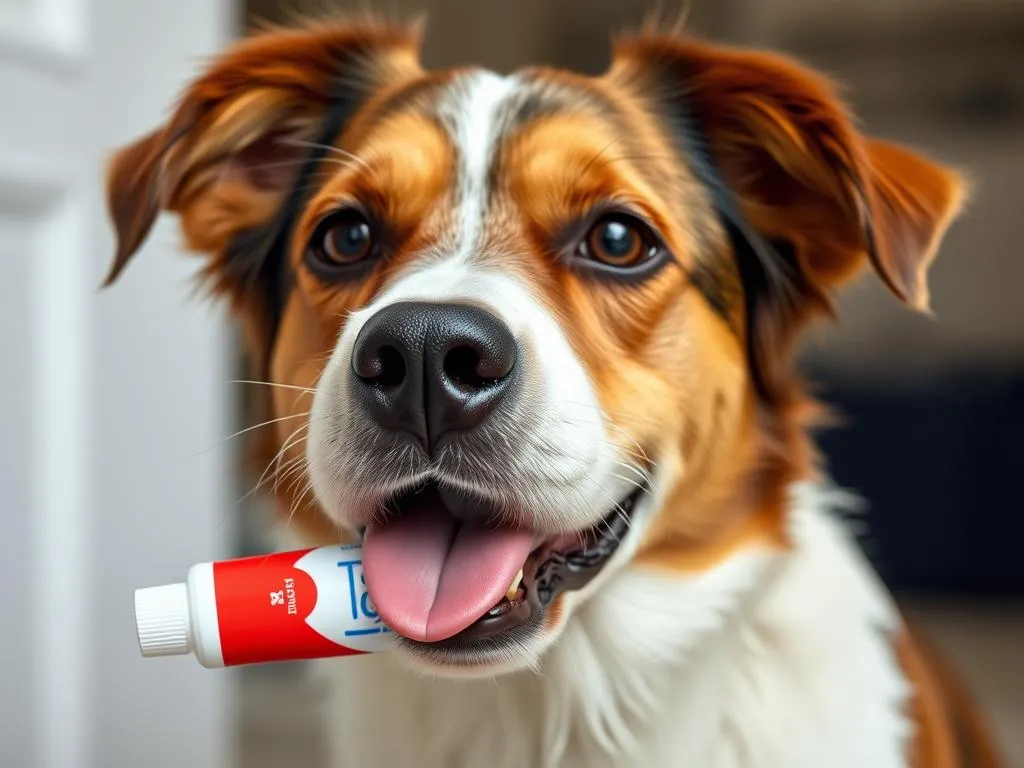
Introduction
The health and well-being of our furry companions are paramount for any responsible pet owner. Dog health care involves being aware of the various risks that can affect our pets, especially when it comes to common household items. Many everyday products that we use without a second thought can pose significant risks to our dogs. One such item is toothpaste, which can contain ingredients harmful to our canine friends. In this article, we will explore what to do if your dog swallowed toothpaste, along with valuable insights on its potential effects and preventive measures.
Understanding Dog Health Risks
Common Household Hazards
Our homes are often filled with items that may seem innocuous but can be dangerous to dogs. From medications and cleaning supplies to food items, the risks are diverse. For instance, many human products, including toothpaste, can be harmful due to their ingredients. Recognizing these hazards is the first step in ensuring your dog’s safety.
Why Dogs Ingest Non-Food Items
Dogs are naturally curious creatures, and their inquisitive nature can often lead them to chew on or ingest items that are not food. Behavioral reasons for this can include:
- Curiosity: Dogs explore their surroundings through their mouths.
- Boredom: A lack of stimulation can drive them to chew on various objects.
- Anxiety: Stressful situations may lead dogs to seek comfort in chewing.
Additionally, underlying health issues may also prompt unusual eating habits, making it essential to monitor your dog’s behavior closely.
Toothpaste: Ingredients and Their Effects on Dogs
Common Ingredients in Toothpaste
Toothpaste is formulated for human use and often contains several substances that can be toxic to dogs. Some of the most concerning ingredients include:
- Fluoride: While effective for human dental health, fluoride can cause gastrointestinal issues and toxicity in dogs.
- Xylitol: This popular sweetener, often found in sugar-free products, is highly toxic to dogs and can lead to severe health complications, including liver failure.
- Detergents and Abrasives: Many toothpaste brands contain chemicals and abrasives that can irritate your dog’s digestive tract.
Symptoms of Toothpaste Ingestion
If your dog ingests toothpaste, it’s vital to be vigilant for any concerning symptoms. Initial signs may include:
- Vomiting
- Drooling
- Diarrhea
In more severe cases, you may observe:
- Seizures
- Lethargy
- Tremors
If you notice any of these symptoms, it is crucial to act swiftly.
What to Do If Your Dog Swallowed Toothpaste
Immediate Steps to Take
In the unfortunate event that your dog swallowed toothpaste, the first step is to stay calm. Your dog can pick up on your anxiety, which may exacerbate the situation. Next, assess the situation by determining how much toothpaste was ingested. This information will be critical when seeking veterinary care.
Contacting a Veterinarian
If you determine that your dog has ingested a significant amount of toothpaste, it’s time to call your veterinarian. When to call depends on the symptoms your dog is displaying. If your dog is showing signs of distress or toxicity, do not hesitate to reach out for professional help.
When you contact the veterinarian, be prepared to provide:
- The type of toothpaste ingested
- The estimated amount consumed
- Any symptoms your dog is displaying
Home Remedies and First Aid
In some cases, your veterinarian may recommend inducing vomiting, but this should only be done under their guidance. If you are advised to proceed, you can use hydrogen peroxide (3%) to induce vomiting safely. Administer one teaspoon for every 5 pounds of your dog’s body weight, and never exceed 3 tablespoons.
While waiting for veterinary advice, keep a close eye on your dog and monitor for any changes in behavior or health.
Prevention: Keeping Your Dog Safe
Safe Storage of Household Products
Preventing toothpaste ingestion begins with proper storage. Here are some tips to help you organize and secure potentially harmful items:
- Store toothpaste and other human products in high cabinets or locked drawers.
- Use child-proof containers for additional safety.
- Keep a checklist of household items that are harmful to dogs for quick reference.
Educating Family Members
Teaching all family members, especially children, about pet safety is essential. Ensure they understand:
- The importance of keeping food and non-food items out of reach.
- The risks associated with sharing human snacks with pets.
- The need to be vigilant about what items are left around for dogs to access.
Alternatives to Dog Toothpaste
Safe Dental Care Products for Dogs
Fortunately, there are many safe dental care products specifically designed for dogs. When selecting toothpaste for your canine companion, look for:
- Dog-specific toothpaste: These products are formulated without harmful ingredients and often come in flavors that dogs love.
- Dental chews: These can help maintain oral hygiene while satisfying your dog’s chewing instincts.
- Water additives: These products can be added to your dog’s water to help reduce plaque and tartar buildup.
Establishing a Dental Care Routine
Creating a regular dental care routine is crucial for your dog’s overall health. Here are some best practices for brushing your dog’s teeth:
- Start slowly: Introduce your dog to the toothbrush and toothpaste gradually.
- Aim for consistency: Brush your dog’s teeth several times a week, if not daily.
- Schedule regular veterinary dental check-ups: These are essential for maintaining your dog’s oral health.
Conclusion
In summary, being vigilant about your dog’s health and safety is essential. Understanding the risks associated with common household products like toothpaste and knowing what to do if your dog swallows it can make all the difference. By implementing preventive measures and establishing a solid dental care routine, you can help ensure your furry friend remains healthy and happy. Remember, your actions can protect your dog from unnecessary harm, so stay informed and proactive about their health care needs.









